Tools
Tools of many kinds are essential for model railroading, for large power saws and drills for making the supporting structure, to jeweler's screwdrivers for taking apart models, to specialized tools like soldering irons and airbrushes. In this section of the site, I'll describe some of the tools I use.
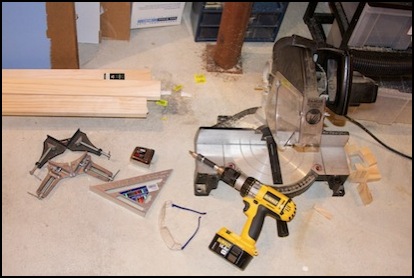
My basic carpentry tools, from left: angle clamps for making square frames, tape measure and 90-degree angle, safety glasses, battery drill with counter-sink bit for screw holes, miter saw for cutting lumber
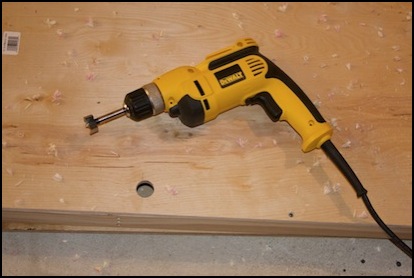
The corded drill I use for heavier work, with the 1” Forstner bit I used to make holes for wiring runs (much superior to a hole saw).

My power screwdriver, with a 7/16 socket bit and a pair of locking pliers. This is how you bolt tables together without wearing out your hands. Thread the bolt through a hole drilled in the wood, attach washers on each side first, put a nut onto the bolt and make sure the threads engage. Then clamp the pliers on the nut and hold it in place, put the screwdriver on the head of the bolt, and spin it down tight. The screwdriver also works well with actual screws; much of the layout was put together with it. DeWalt has apparently discontinued this model after at least a decade in production, and replaced it with a pistol-grip model. The new one is nice, but not as useful for the kinds of narrow environments where I end up using mine. I bought a second one of these on clearance when they discontinued it (I got two fresh batteries plus a spare screwdriver for less than the cost of one new battery); hopefully someone will keep making batteries that fit it as those are what will eventually wear out; my first set lasted about 9 years though.
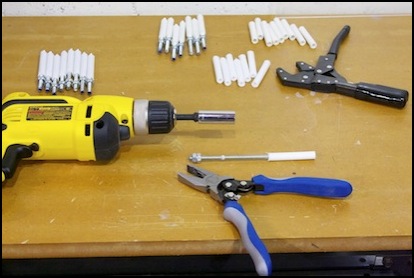
Making supports for the urban station using normal pliers (front), locking pliers (right rear) and the drill with the socket attachment (screwing the 1/4-inch rod into the Plex tubing). The locking pliers are one of my main table-construction tools, used along with the electric screwdriver for tightening the bolts that holds the tables and frame assembly together. The blue-handled pliers are part of a set of three (short square-nose, long-nose, and cutters) that get used for all sorts of cutting, gripping and bending tasks.
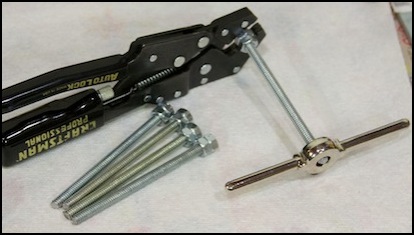
Locking pliers and a rethreading tool (“die”) being used to fix up the threads on 1/4” rod after being cut from a longer length of rod (the threads at the end get crushed). The pliers are clamped to a nut, one of two tightened into each other to lock them together, which provides a solid handle so the rod won’t turn while being re-threaded. This is from the same station-support construction project as the previous photo.
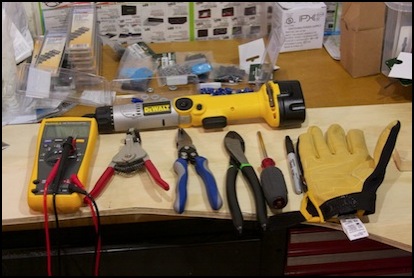
My principal wiring tools, L-to-R: Fluke Meter, Wire Strippers, Insulated Pliers, lug-crimping pliers, phillips screwdriver, sharpie and leather-palm gloves (with electric screwdriver). Note: I’ve crimped literally hundreds of spade lugs on my wiring. The lug-crimping pliers are an essential. I started with one of the cheap stamped-steal crimping tools you can get for $5, and my hand was in agony before I’d done the first 50 crimps. With these, there’s a longer lever (so less force is needed) and they fit smooth to the hand. They cost nearly $40, but are worth every cent. I can do a hundred lugs in an evening (and have) and only be a little bit sore.
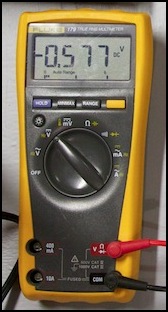
My primary tool for layout electronics work: a good digital multimeter (and they don’t come much better than Fluke; this one’s a model 179 I bought a couple of years ago to replace an older one that “walked off” at some point). I use it for continuity checking wiring, resistance-checking rail connections to detect bad track joiners, and all sorts of voltage measurements. About the only thing it can’t do is tell me the DCC voltage, and for that I use my RRampMeter.
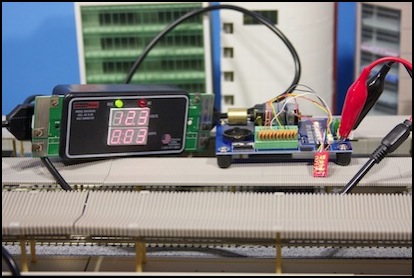
The RRampMeter (left) being used with a DCC decoder and decoder-tester as a load so that I can check track voltage under “in use” conditions. In this photo you can see that the DZ125 (or DZ123, not sure which) is drawing 30 mA at 12.3V on one of the tracks in my Urban Station. The pickups from the meter to the track are a set of test probes that can clamp onto something (in this case rail) so I can set this up and then use my hands to operate the throttle (or in this case, the camera).
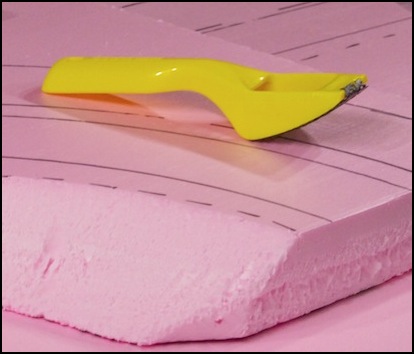
A Stanley Sur-form scraper, probably the best tool ever invented for shaping insulation foam into scenery (I rather doubt that was the application the inventor had in mind). It’s sitting atop a chunk of foam that would eventually be the approach to the bridges leading into the Urban Station, on the “village” side of the big river.
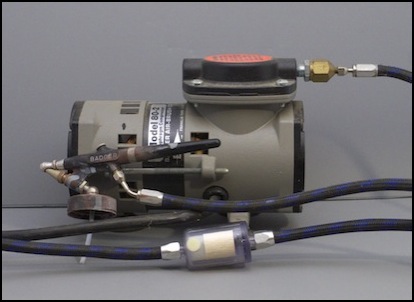
My original Badger 350 airbrush and its compressor. This worked well enough in its day, but had some issues and is due to be replaced.




